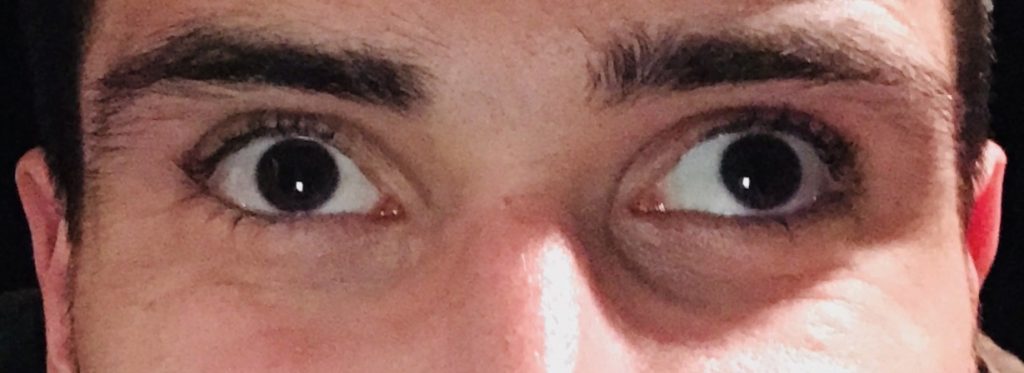Strabismus
Eye Care > Common Eye Conditions > Strabismus
What is Strabismus?
(Crossed or turned eye)
Strabismus is a problem caused by one or more improperly functioning eye muscles, resulting in a misalignment of the eyes. Normally, each eye focuses on the same spot but sends a slightly different message to the brain. The brain superimposes the two images, giving vision depth and dimension. Here’s an easy way to see how the eyes work together: hold your finger at arm’s length. While looking at your finger, close one eye, then the other. Notice how your finger changes position. Even though the images are slightly different, the brain interprets them as one.

Each eye has six muscles that work in unison to control movements. The brain controls the eye muscles, which keep the eyes properly aligned. It is critical that the muscles function together for the brain to interpret the image from each eye as a single one.
Strabismus must be detected early in children because they are so adaptable. If a child sees double, his or her brain quickly learns to suppress or block out one of the images to maintain single vision. In a very short time, the brain permanently suppresses vision from the turned eye, causing a weak or amblyopic eye. Children may also develop a head tilt or turn to compensate for the problem and eliminate the double image. Unlike children, adults with a newly acquired strabismus problem typically see double.
There are many causes of strabismus. It can be inherited, or it may be caused by trauma, certain diseases, refractive errors and sometimes eye surgery.
Signs and Symptoms
Adults are much more likely to be bothered by symptoms from strabismus than young children. It is unusual for a child to complain of double vision. Children should undergo vision screening examinations to detect problems early. The younger the child is when strabismus is detected and treated, the better the chance of normal vision. The following are common signs and symptoms:
- Turned or crossed eye
- Head tilt or turn
- Squinting
- Double vision (in some cases)
Detection and Diagnosis
Strabismus is detected with a comprehensive eye examination and special tests used to evaluate the alignment of the eyes.
Treatment
The appropriate treatment for strabismus is dependent on several factors including the patient’s age, the cause of the problem, and the type and degree of the eye turn. Treatment may include patching, corrective glasses and prisms, together with vision therapy or, as a last resort, surgery.
Vision therapy, together with possible refractive error correction, attempts to teach the brain to utilise both eyes together as a team. For this treatment to be effective, it must be done at a young age before the child can develop amblyopia.
Surgery is sometimes performed for both adults and children to straighten a crossed eye. The procedure may be done with local or general anaesthesia. There are several different surgical techniques used to correct strabismus. The appropriate one is dependent on the muscle involved and the degree of the eye turn.
Image By KLN55 – Own work, CC BY-SA 4.0,
https://commons.wikimedia.org/w/index.php?curid=81253483
